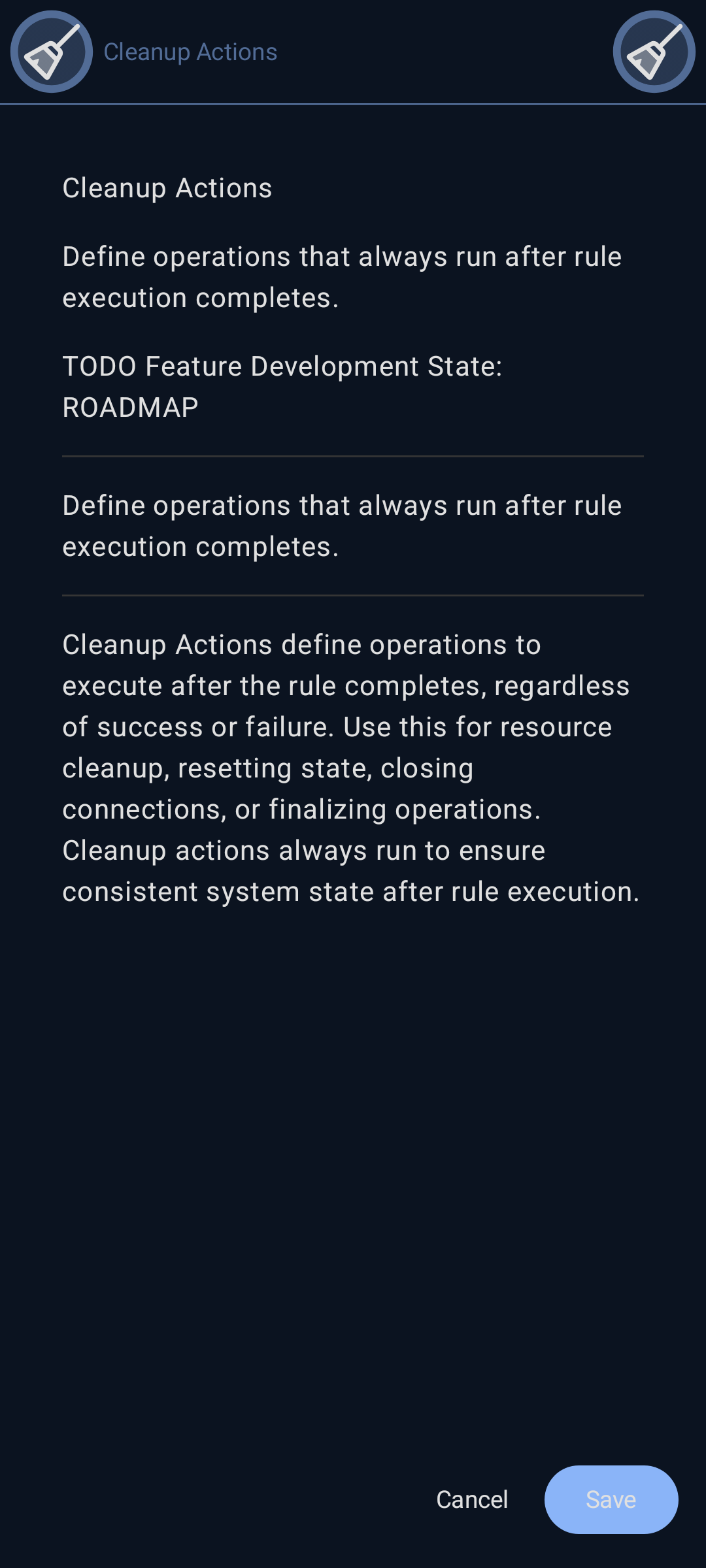Status of features under development
 Commands Configure
Commands Configure
stub
- Status: roadmap
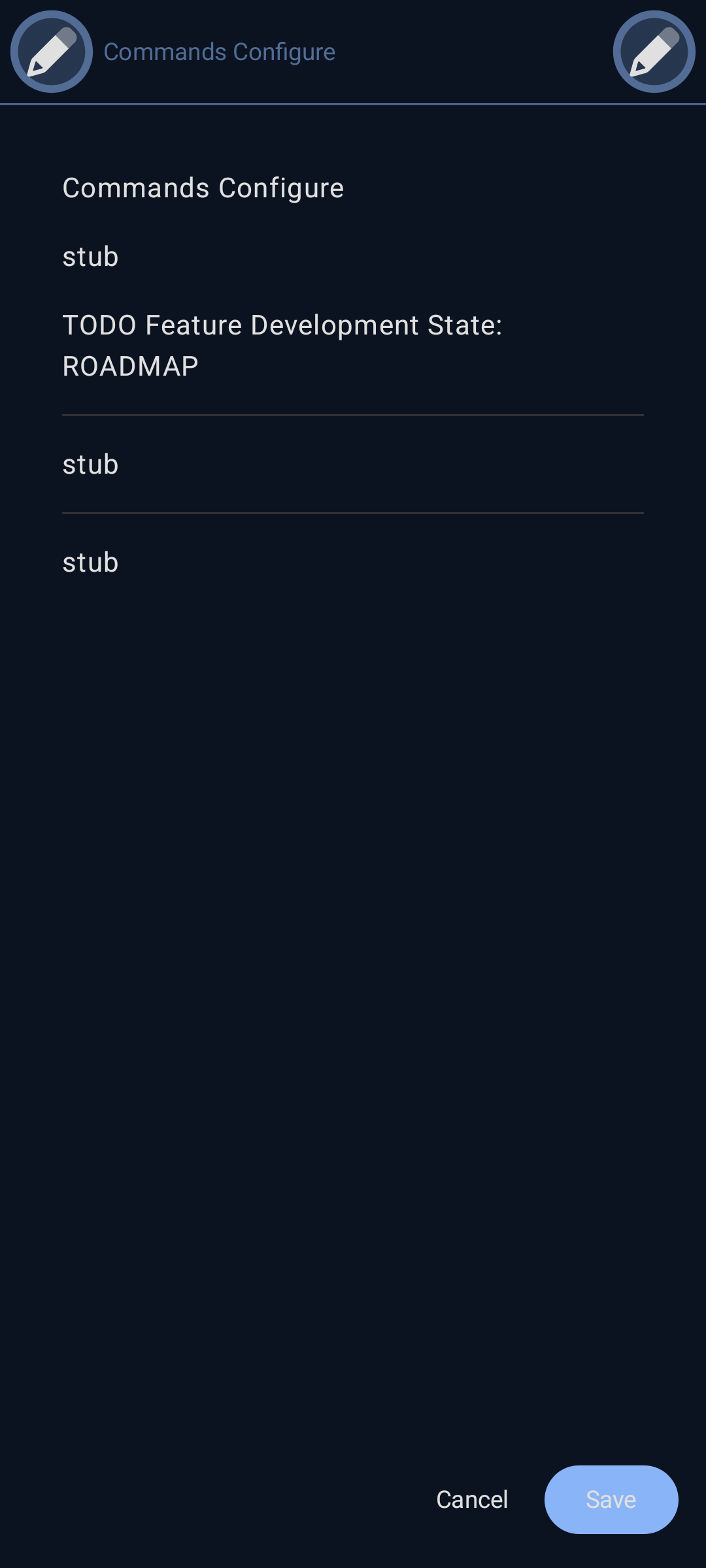
 Commands Delete
Commands Delete
stub
- Status: roadmap
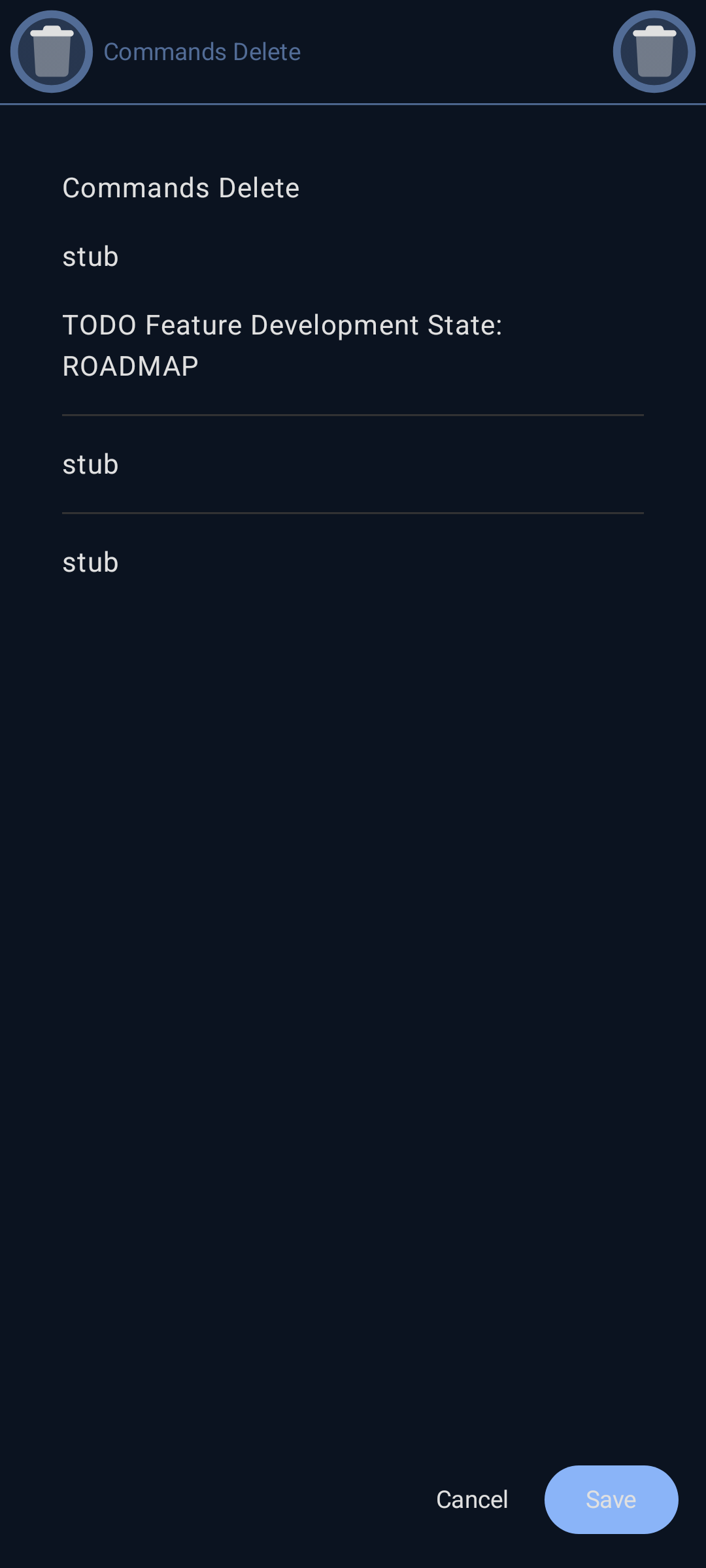
 Server
Server
The Server component is the core runtime environment for Krill applications. It manages data points, executes automation rules, and handles communication with connected devices. The server runs on Raspberry Pi or compatible hardware and provides the foundation for all automation and data logging operations.
- Status: roadmap
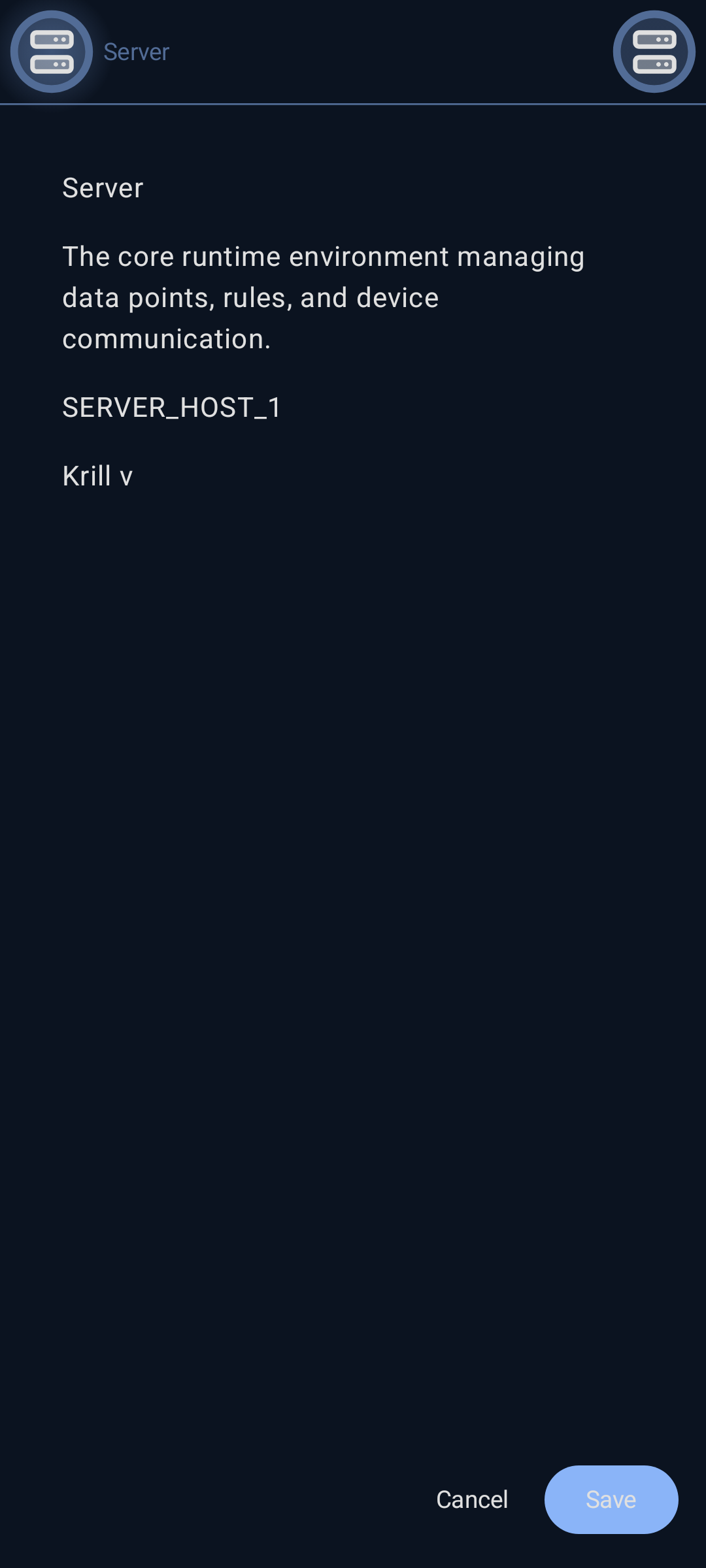
 Server Pin
Server Pin
stub
- Status: roadmap
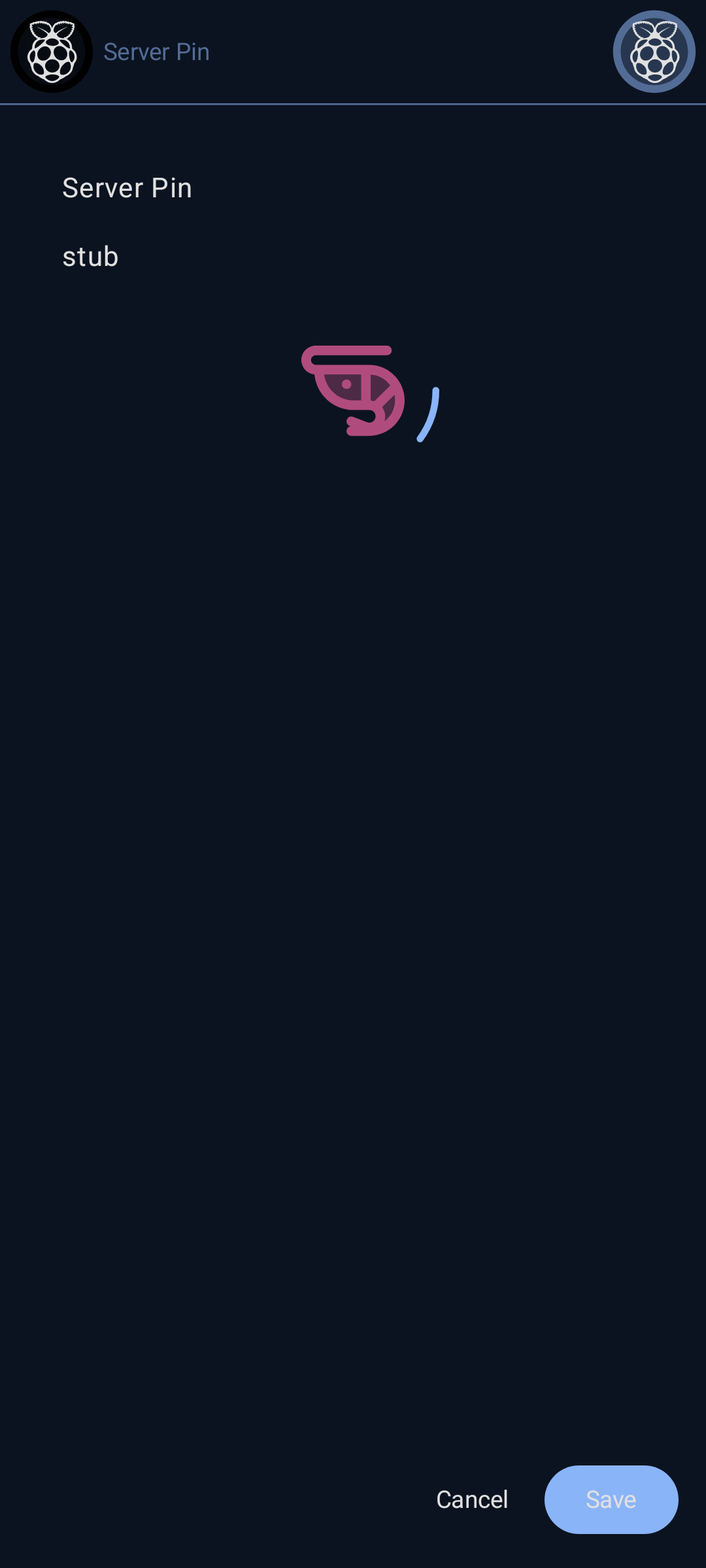
 Server Project
Server Project
stub
- Status: roadmap

 Client
Client
stub
- Status: roadmap
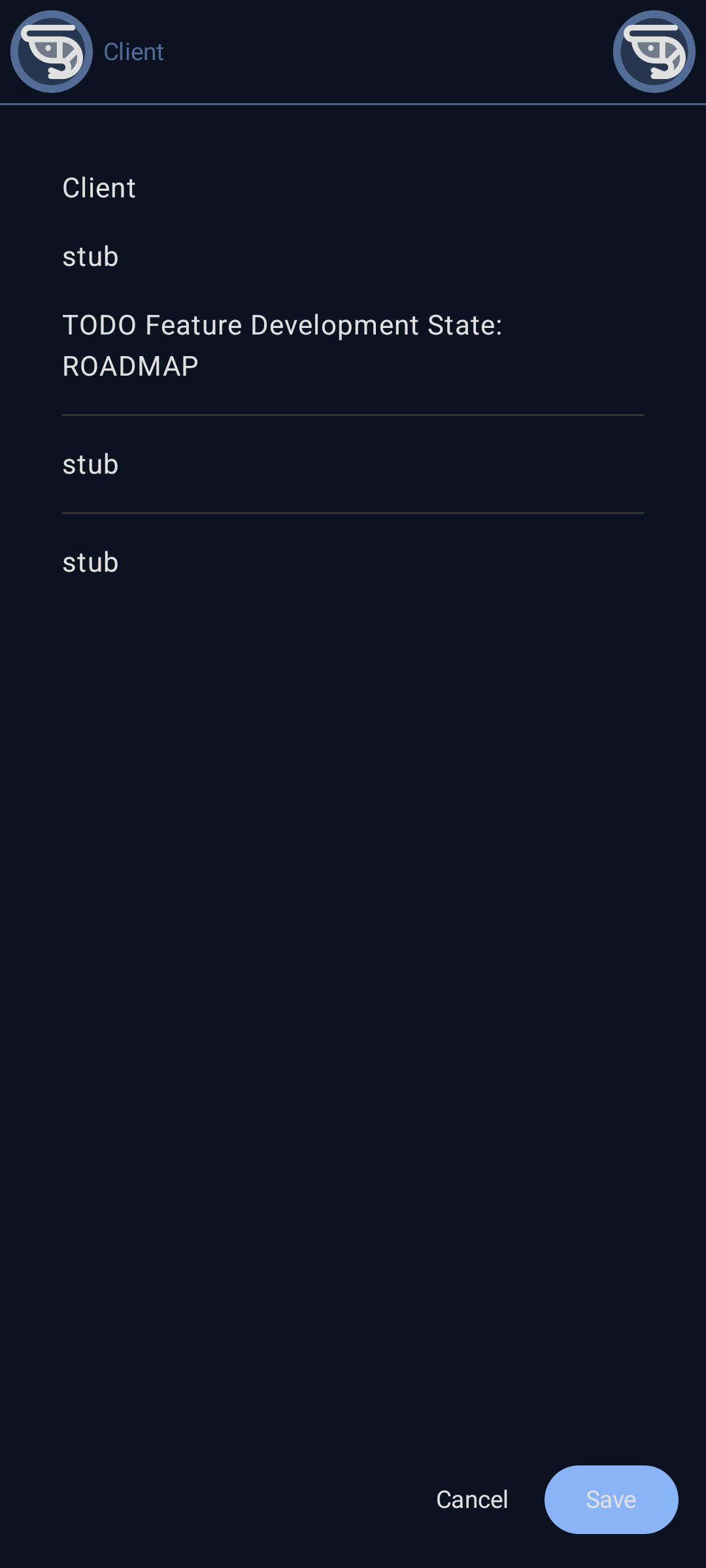
 Serial Device
Serial Device
Serial Device support enables communication with hardware devices connected via serial ports (USB, UART). This feature provides integration with various serial-based sensors, microcontrollers, and IoT devices including Zigbee networks and QTPY boards. Serial devices can send data to data points and receive commands from the automation system.
- Status: roadmap
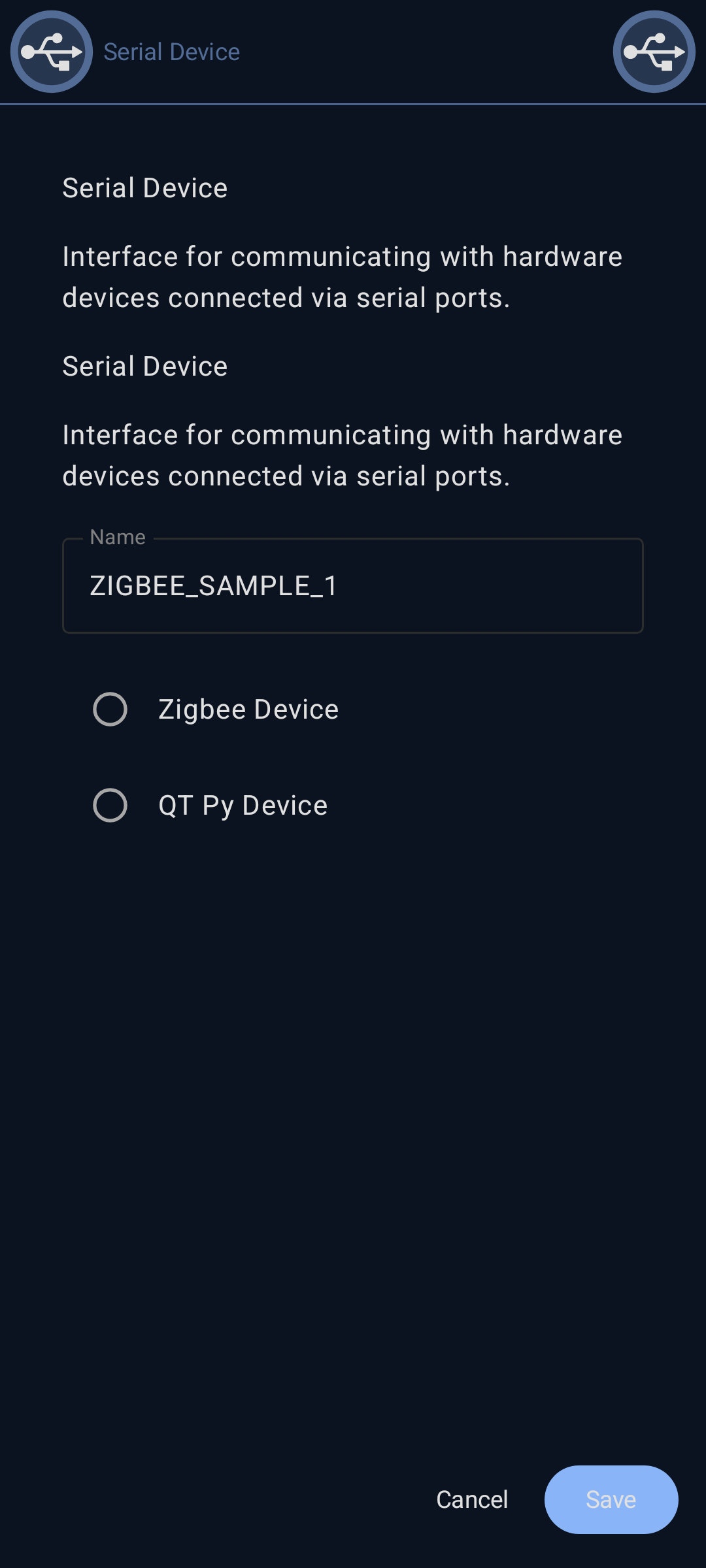
 Zigbee Device
Zigbee Device
Zigbee Device support enables integration with Zigbee wireless sensor networks through a serial-connected Zigbee coordinator. Connect to Zigbee sensors, switches, and smart home devices to collect data and send commands. Supports standard Zigbee protocols for wide device compatibility in home automation and IoT deployments.
- Status: roadmap
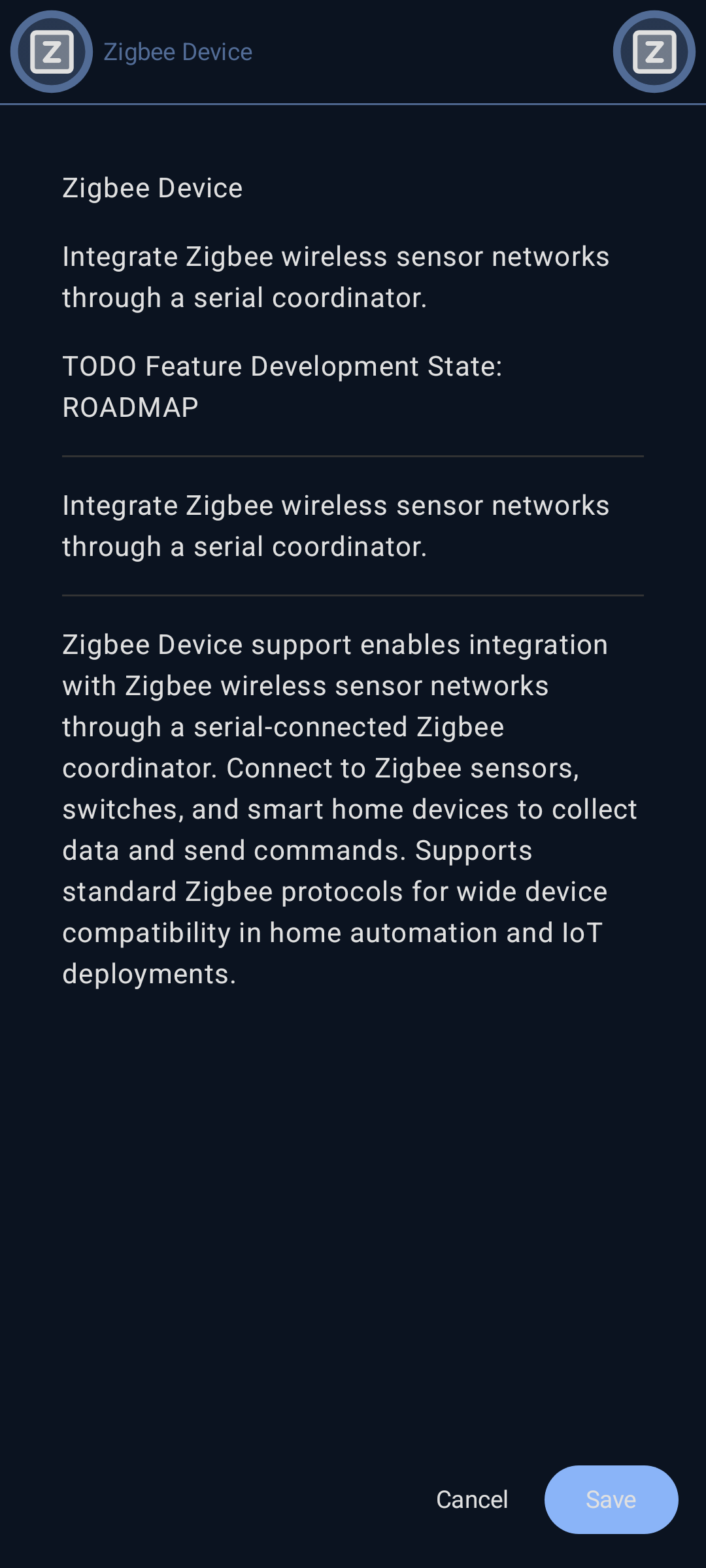
 QT Py Device
QT Py Device
QT Py Device support provides integration with Adafruit QT Py microcontroller boards connected via serial. QT Py boards can act as sensor interfaces, add custom I/O capabilities, or extend the system with specialized hardware functions. Program QT Py boards to collect sensor data, control devices, or implement custom protocols for your automation needs.
- Status: roadmap
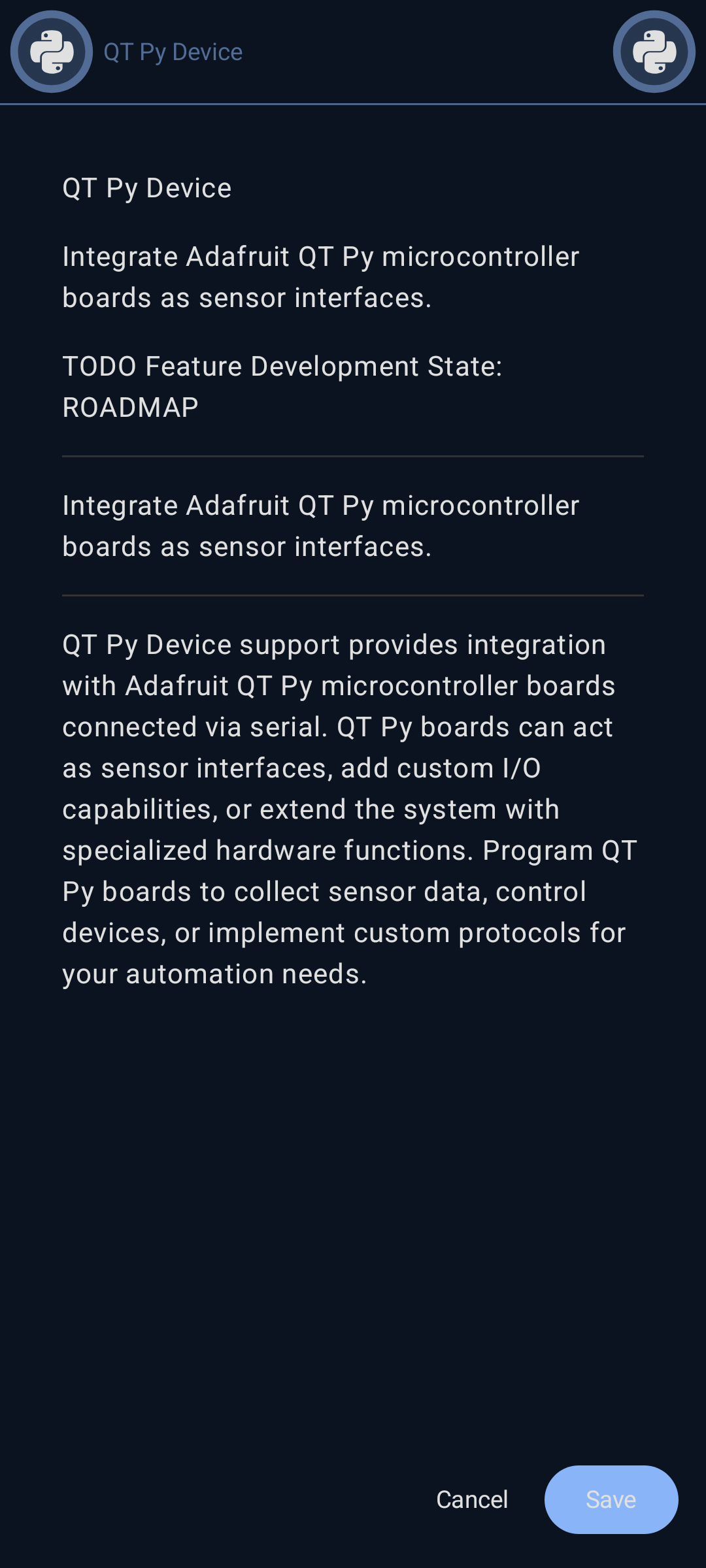
 Data Point
Data Point
A Data Point represents a single measurable value in your automation system, such as temperature, humidity, or sensor readings. Data points continuously collect and store time-series data from connected devices or sensors. They can be configured with triggers to detect specific conditions, perform calculations, and integrate with the rule engine for automated responses.
- Status: roadmap
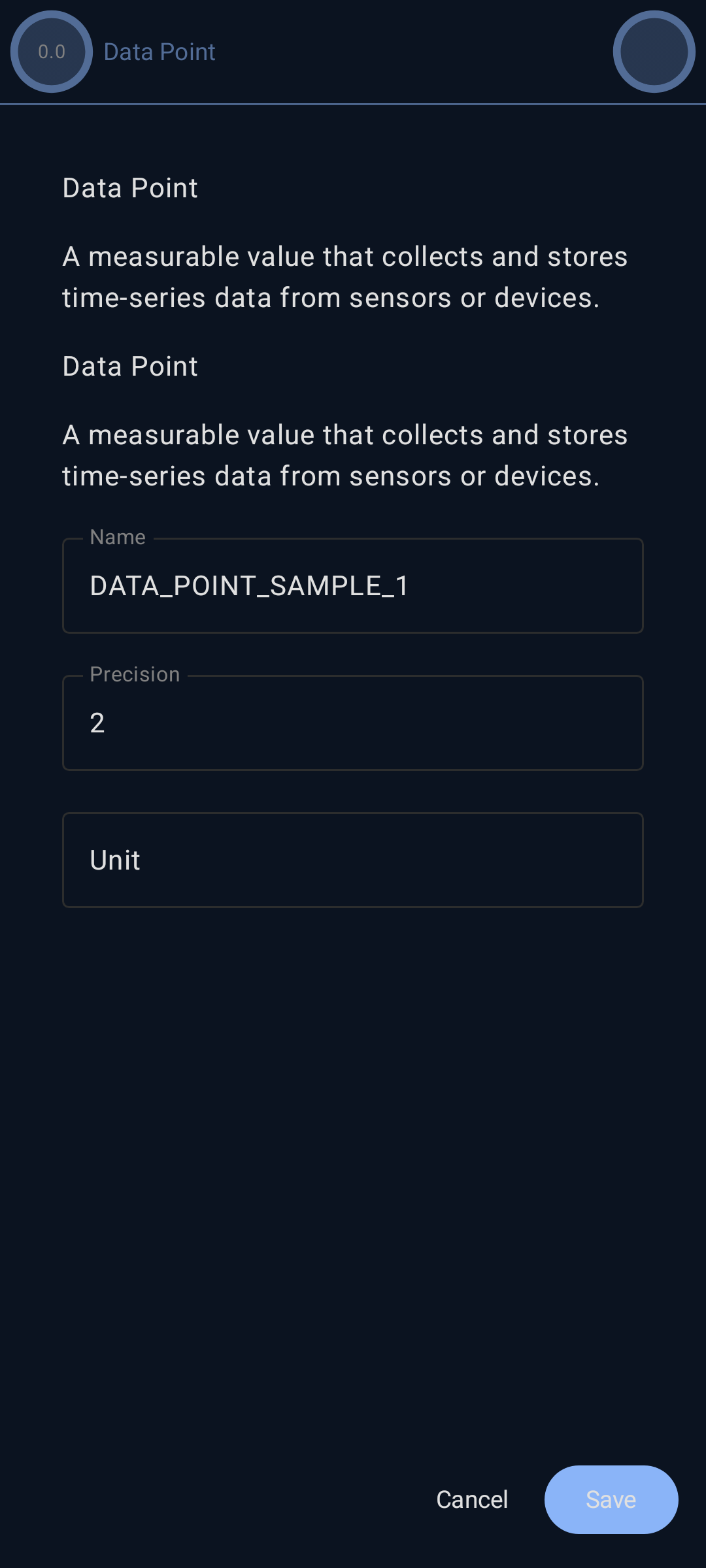
 Data Point Trigger
Data Point Trigger
Data Point Triggers enable automated responses to data conditions. Configure various trigger types including threshold detection (high/low), data filtering (discard above/below), noise reduction (deadband, debounce), and silent alarm monitoring. Triggers can activate rules, send notifications, or execute automated actions when specific conditions are met.
- Status: roadmap
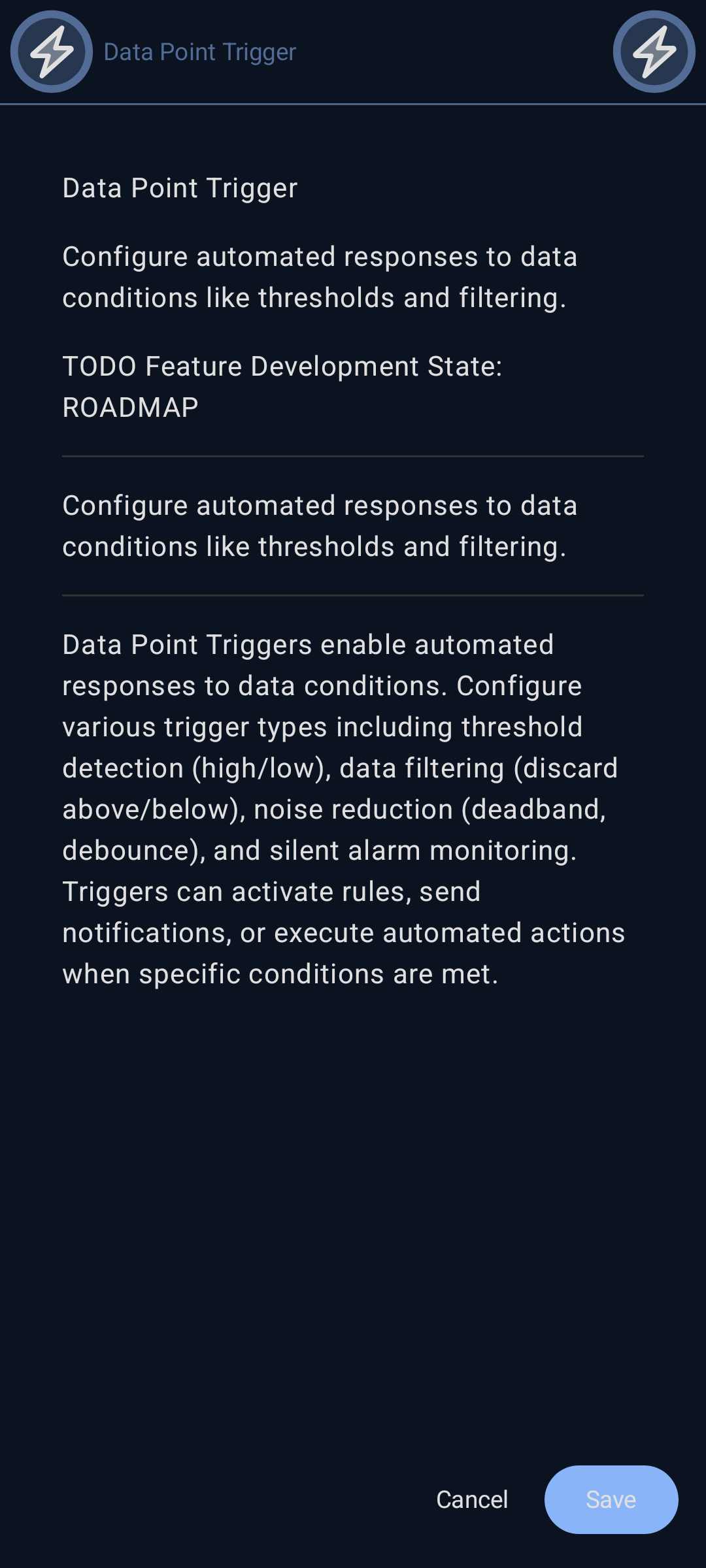
 High Threshold Trigger
High Threshold Trigger
High Threshold Trigger activates when a data point value exceeds a specified upper limit. Use this to detect overheating, high pressure, excessive readings, or any condition where values above a threshold require attention or action. Configure the threshold value and optional hysteresis to prevent trigger oscillation.
- Status: roadmap
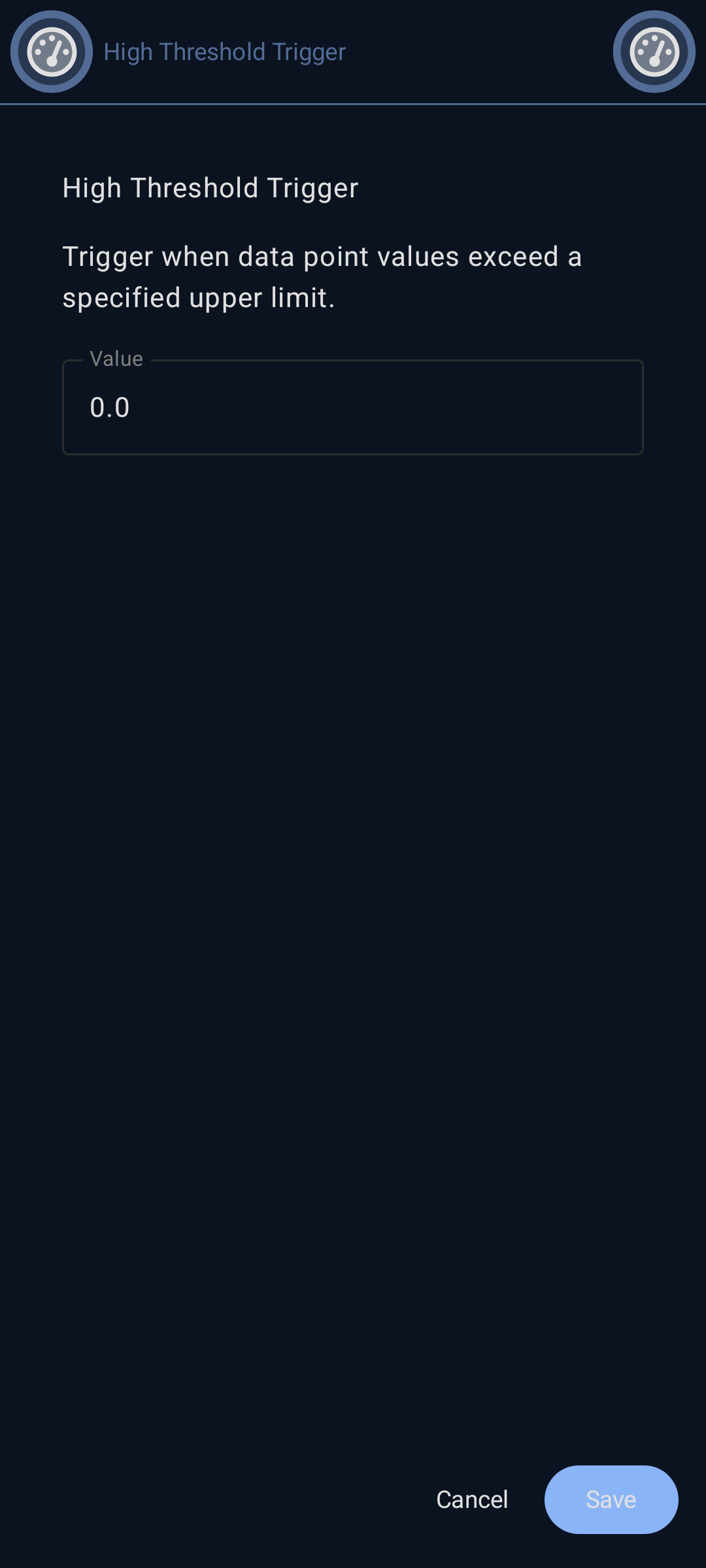
 Low Threshold Trigger
Low Threshold Trigger
Low Threshold Trigger activates when a data point value falls below a specified lower limit. Use this to detect low battery, insufficient pressure, freezing conditions, or any situation where values below a threshold need attention. Configure the threshold value and optional hysteresis to prevent trigger oscillation.
- Status: roadmap
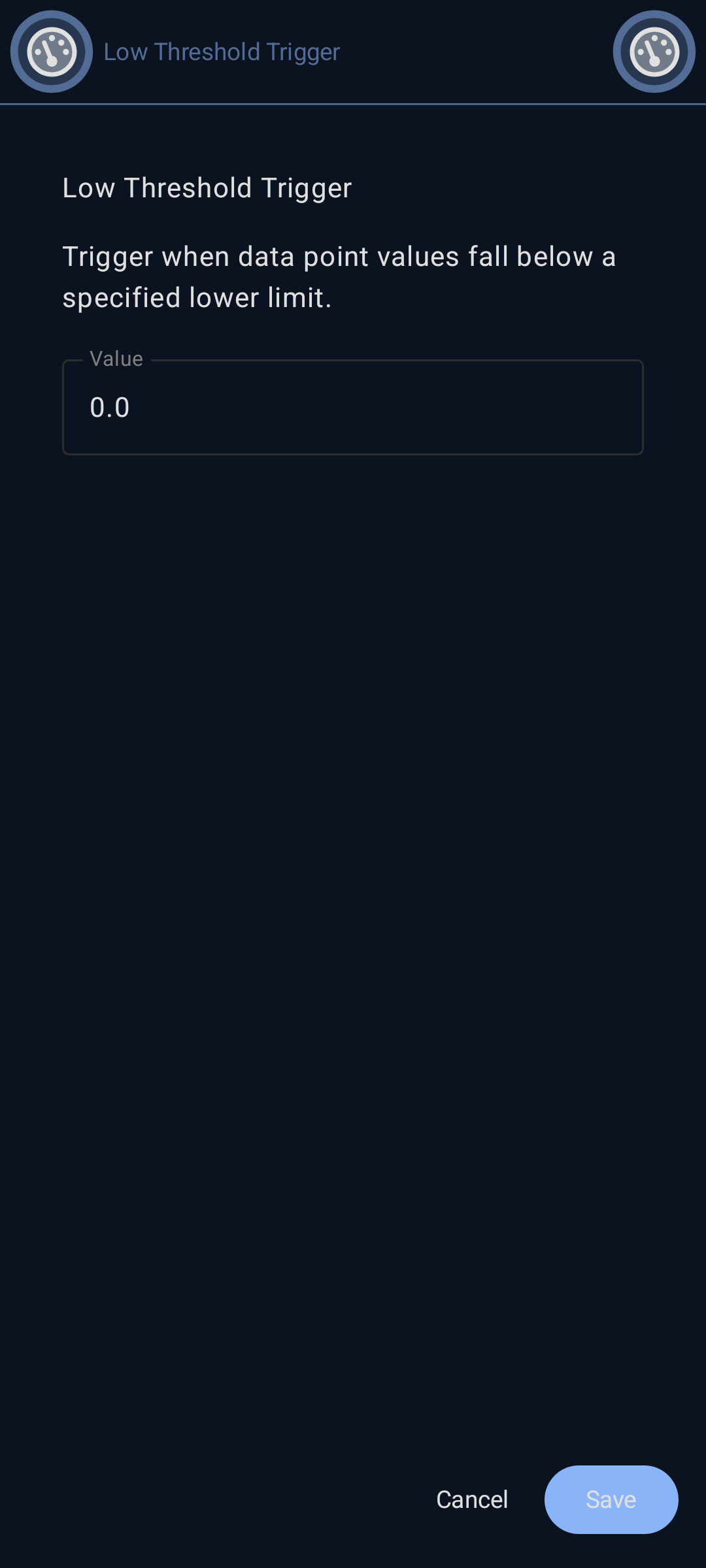
 Discard Above Trigger
Discard Above Trigger
Discard Above filters out and ignores data point values that exceed a specified maximum value. This prevents outliers, sensor errors, or invalid high readings from being recorded or triggering automation. Useful for data quality control and removing noise from measurements.
- Status: roadmap

 Discard Below Trigger
Discard Below Trigger
Discard Below filters out and ignores data point values that fall below a specified minimum value. This prevents outliers, sensor errors, or invalid low readings from being recorded or triggering automation. Essential for data quality control and removing erroneous measurements.
- Status: roadmap

 Silent Alarm Trigger
Silent Alarm Trigger
Silent Alarm Trigger monitors for lack of data updates. It activates when no new data has been received within a specified time period (in milliseconds). Use this to detect disconnected sensors, failed devices, or communication issues that result in stale data.
- Status: roadmap
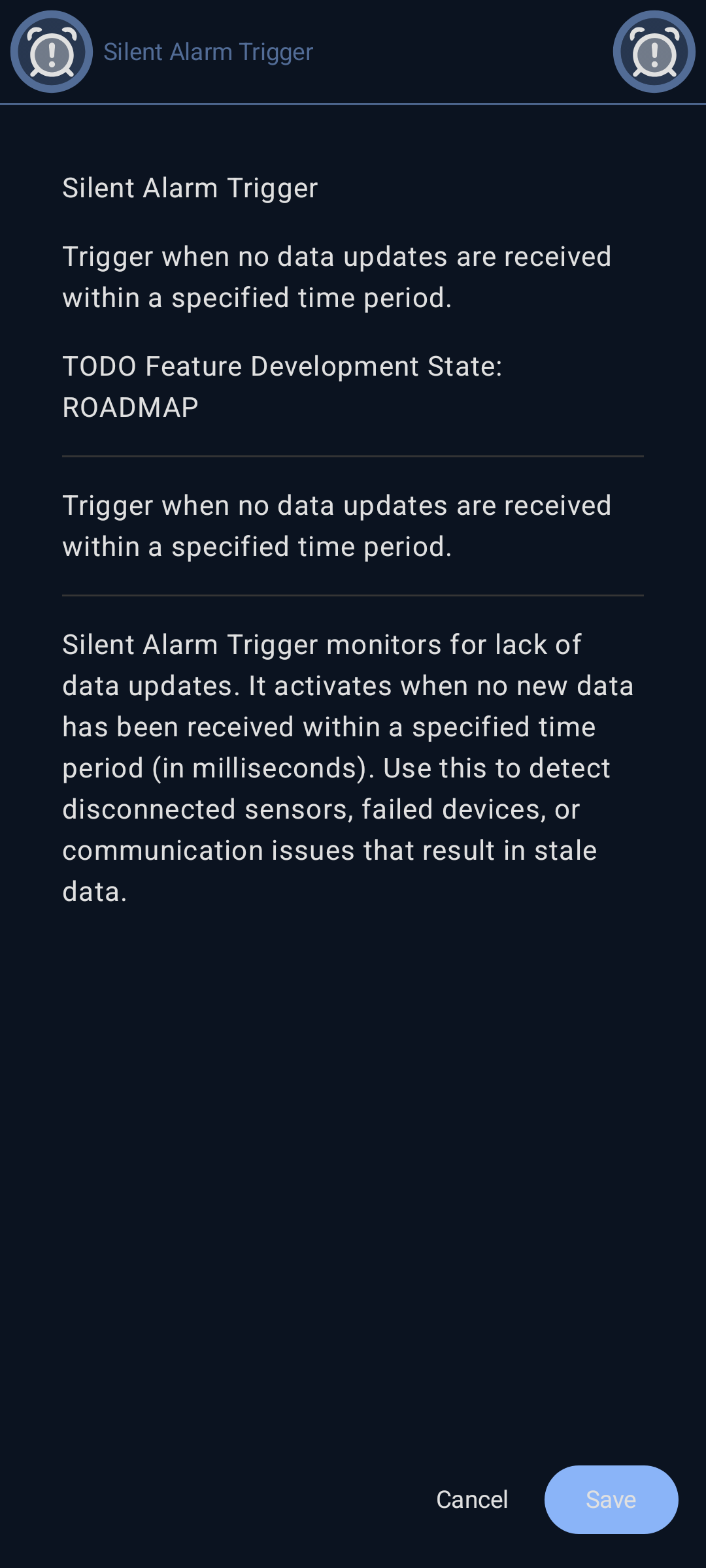
 Deadband Trigger
Deadband Trigger
Deadband reduces noise and prevents excessive triggering by ignoring small value changes. Data updates are only recorded when the value changes by more than the deadband threshold. This is essential for noisy sensors to reduce unnecessary data storage and processing.
- Status: roadmap
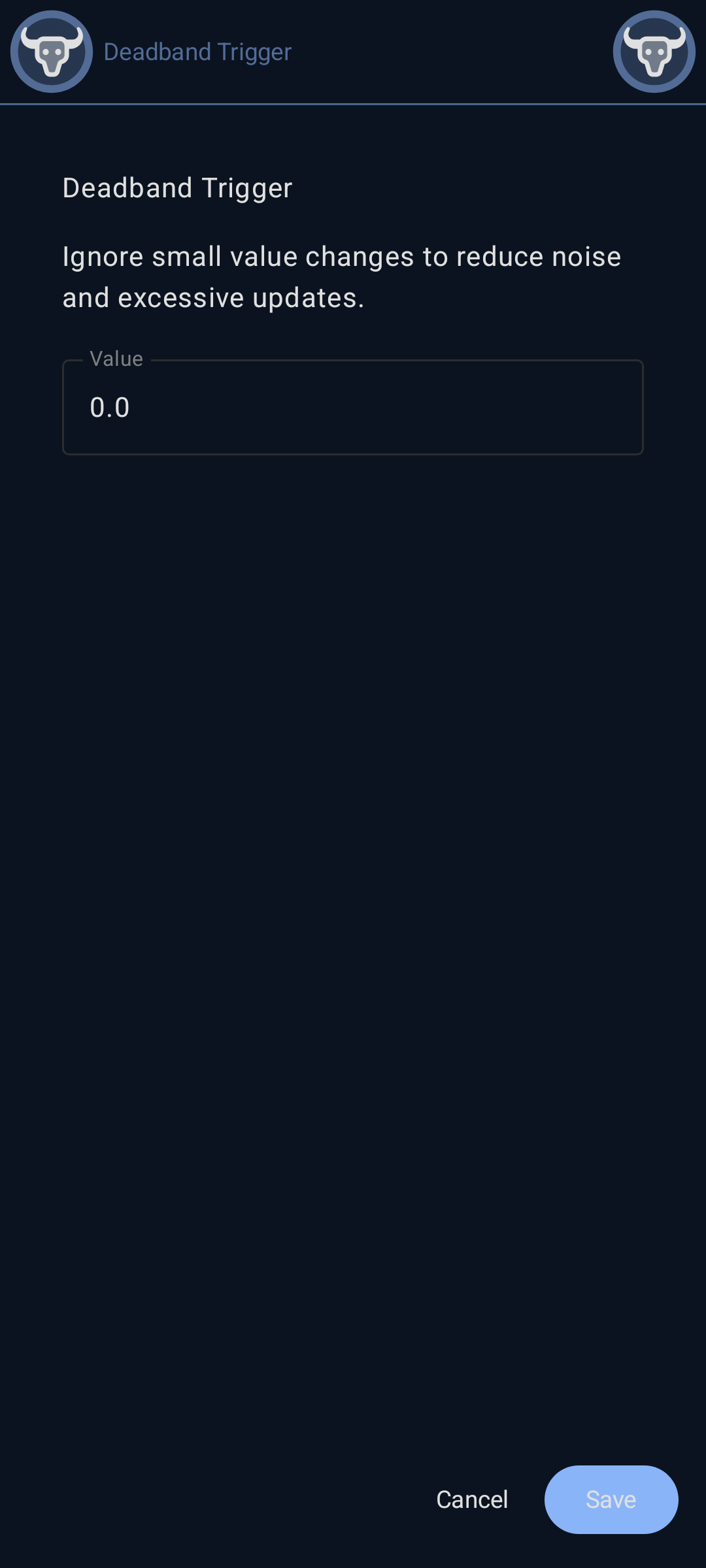
 Debounce Trigger
Debounce Trigger
Debounce delays data updates for a specified time period (in milliseconds) to filter out rapid fluctuations and transient changes. Only values that remain stable for the debounce period are recorded. This prevents false triggers from momentary spikes or drops in sensor readings.
- Status: roadmap

 Calculation Engine
Calculation Engine
The Calculation Engine enables derived data points that compute values from other data points. Create complex formulas, aggregations, and transformations to generate new insights from raw sensor data. Support for mathematical operations, statistical functions, and custom calculations.
- Status: roadmap

 Compute Summary
Compute Summary
Compute Summary generates statistical summaries of data point values over time periods. Calculate min, max, average, sum, and other statistical measures for hourly, daily, weekly, or custom time ranges. Summaries enable trend analysis and reduce storage requirements for long-term data.
- Status: roadmap
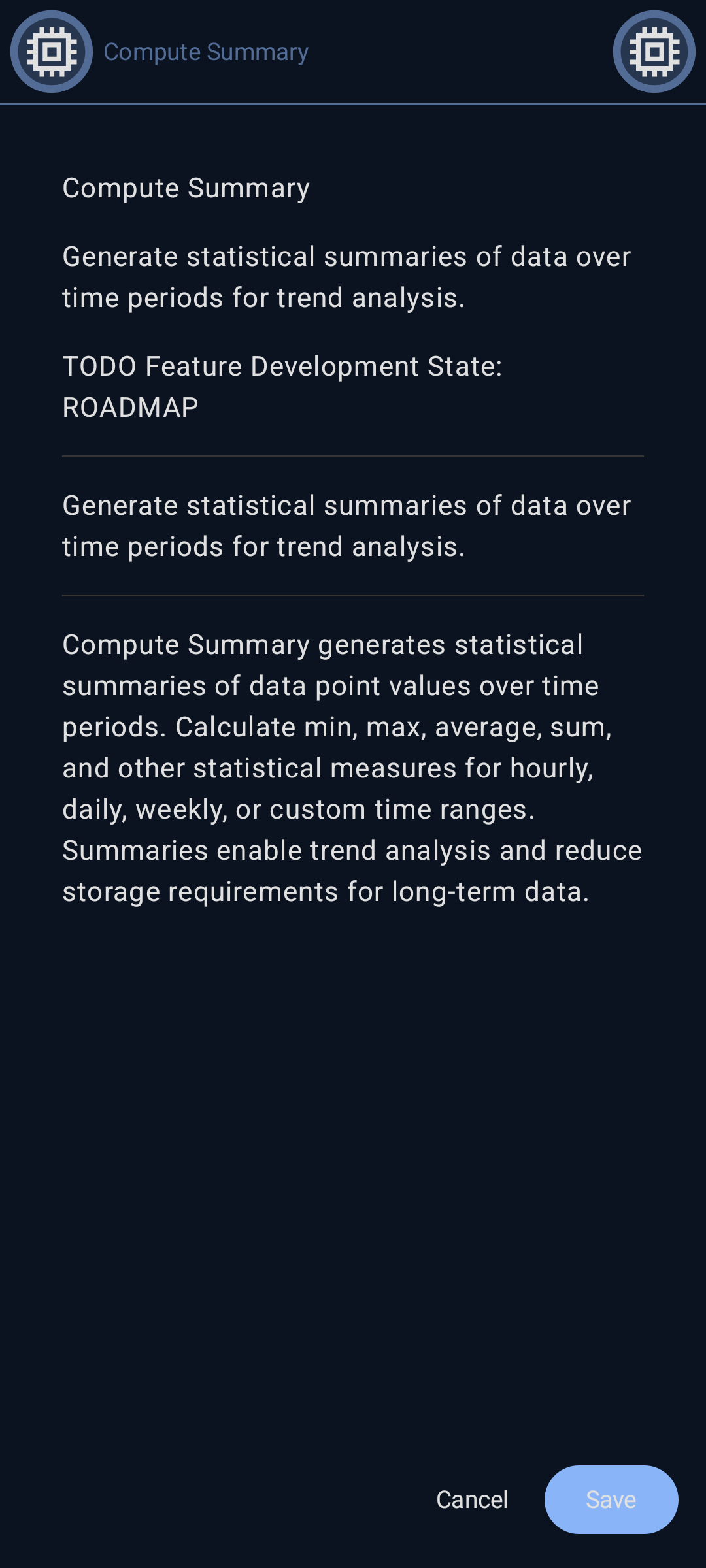
 Rule Engine
Rule Engine
The Rule Engine is the automation brain of Krill. It evaluates conditions and executes actions based on configurable rules. Rules consist of triggers (when conditions), actions (what to do), optional constraints (unless/until conditions), error handling, and cleanup operations. The rule engine enables sophisticated automation workflows like threshold alerts, scheduled tasks, webhook integrations, and GPIO control.
- Status: roadmap
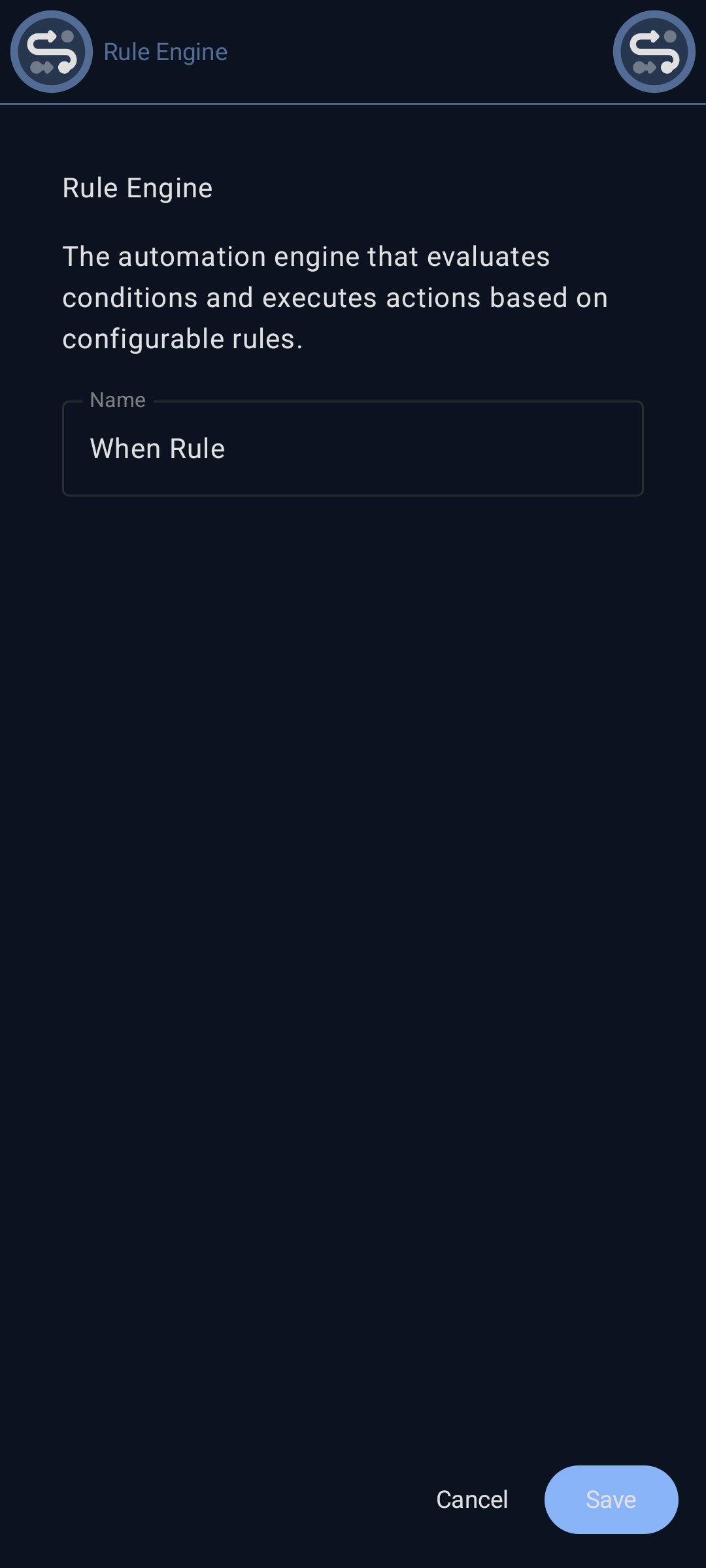
 When Conditions
When Conditions
When Conditions define the triggers that activate a rule. Configure conditions based on data point thresholds (high/low), scheduled times (cron timers), or external events (incoming webhooks). Multiple when conditions can be combined to create complex trigger logic. The rule’s actions execute when these conditions are satisfied.
- Status: roadmap
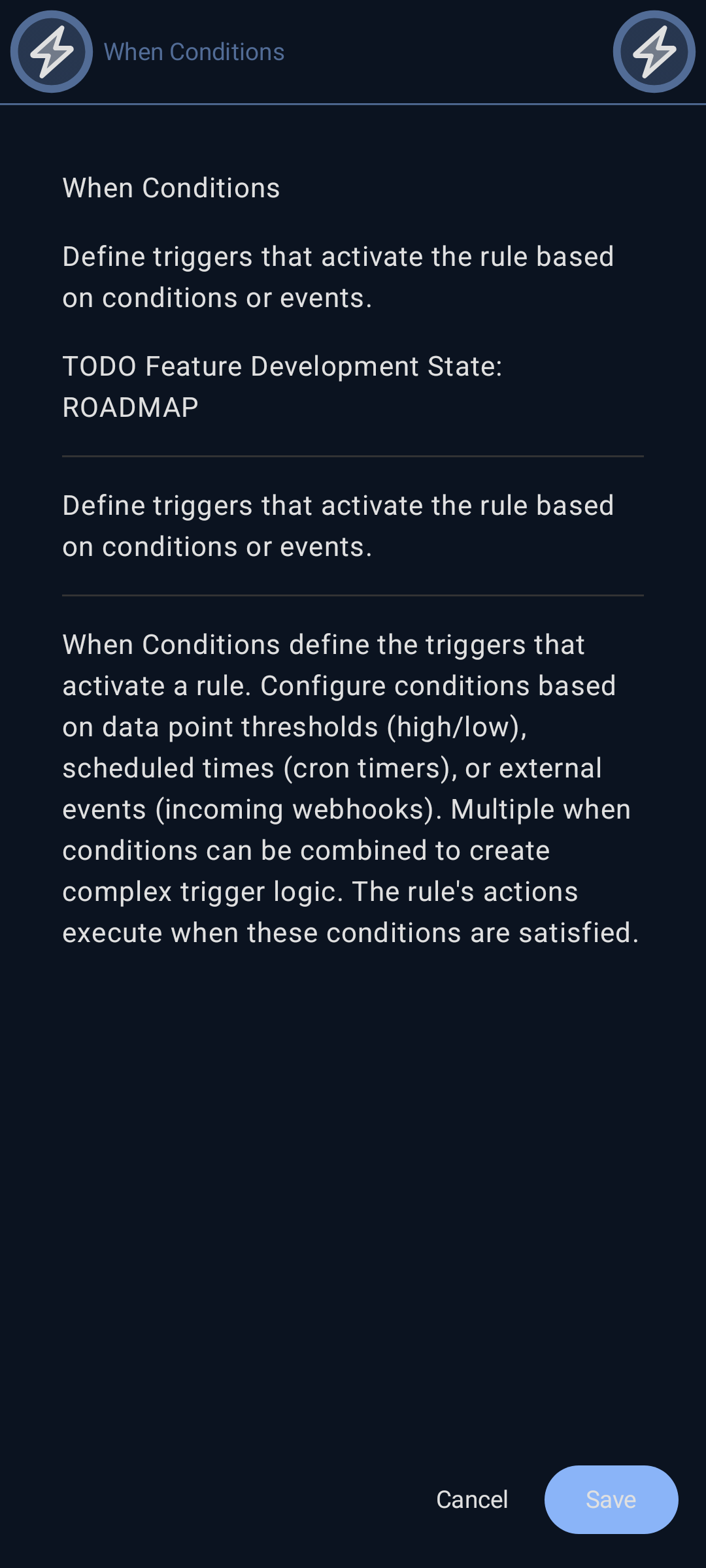
 High Threshold Condition
High Threshold Condition
High Threshold Condition triggers a rule when a data point value exceeds a specified upper limit. Use this to activate automation when readings become too high, such as temperature alerts, pressure warnings, or resource usage notifications. Configure the threshold value and optional hysteresis to prevent trigger oscillation.
- Status: roadmap

 Low Threshold Condition
Low Threshold Condition
Low Threshold Condition triggers a rule when a data point value falls below a specified lower limit. Use this to activate automation for low readings, such as low battery alerts, insufficient levels, or minimum requirement notifications. Configure the threshold value and optional hysteresis to prevent trigger oscillation.
- Status: roadmap

 Cron Timer Condition
Cron Timer Condition
Cron Timer Condition triggers a rule on a scheduled basis using cron expressions. Use this to create time-based automation such as daily reports, periodic maintenance tasks, scheduled data collection, or recurring operations. Supports standard cron syntax for flexible scheduling including minutes, hours, days, months, and weekdays.
- Status: roadmap
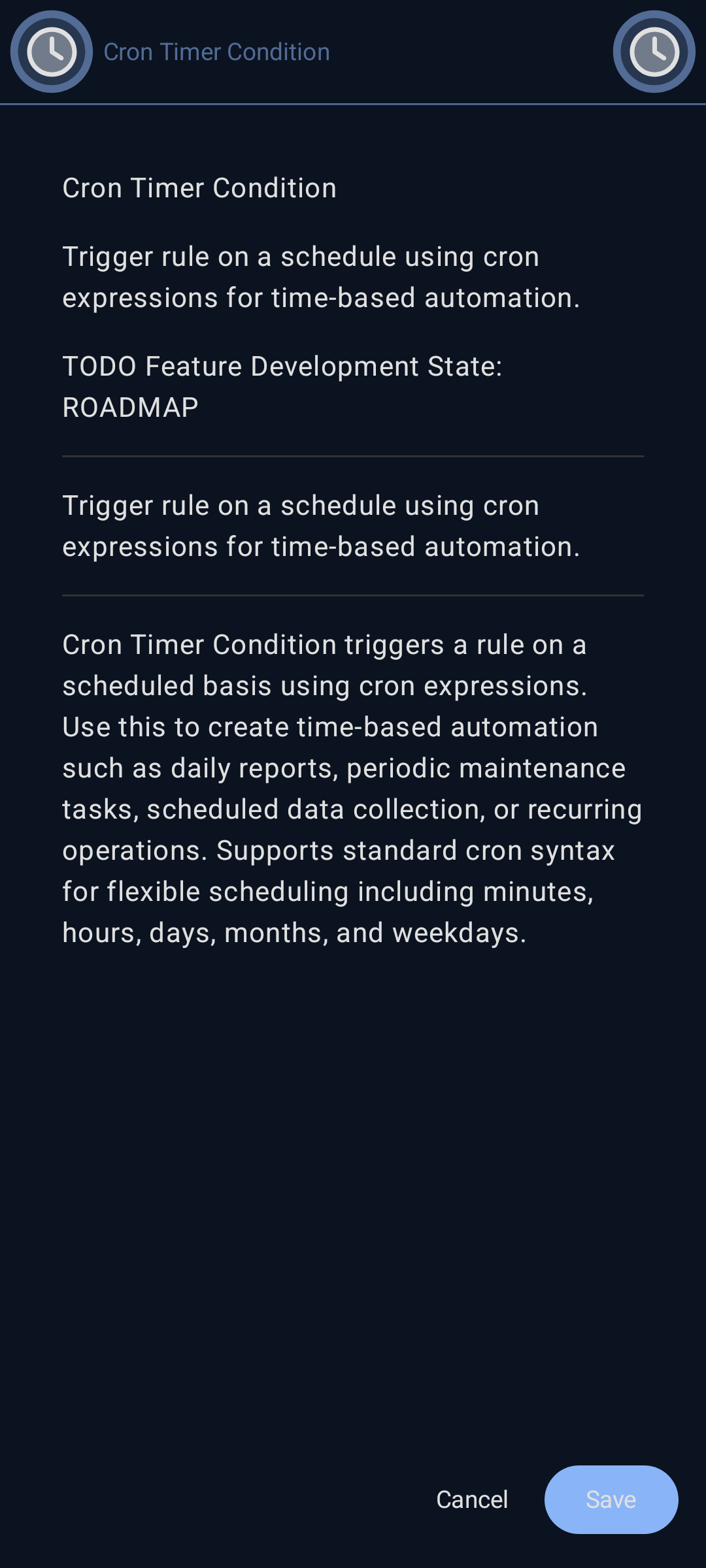
 Incoming WebHook Condition
Incoming WebHook Condition
Incoming WebHook Condition triggers a rule when an HTTP request is received at a specific endpoint. Use this to integrate external systems, respond to external events, or enable remote triggering of automation. The webhook receives data that can be used by rule actions, enabling integration with third-party services and applications.
- Status: roadmap
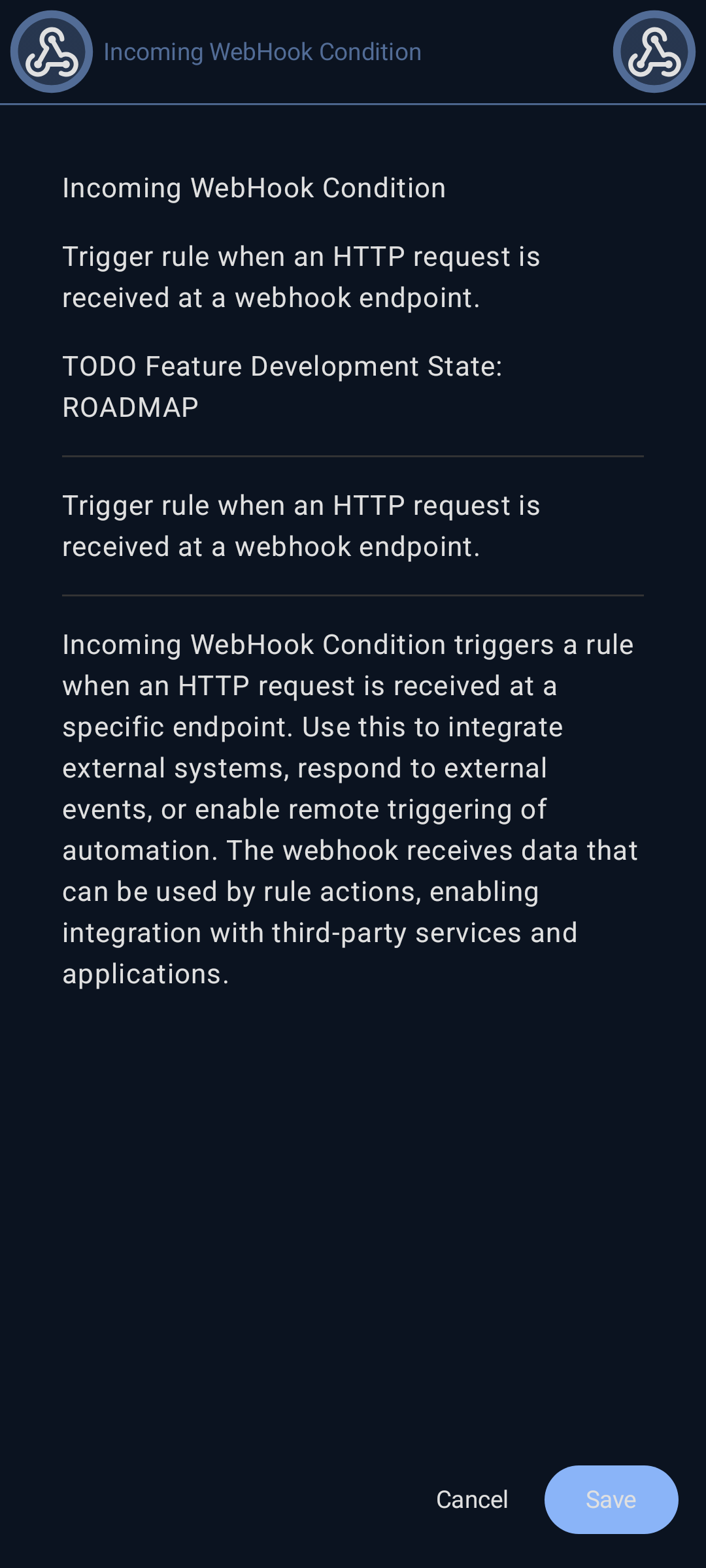
 Do Actions
Do Actions
Do Actions define what happens when a rule is triggered. Configure actions to send webhooks, execute custom scripts, or control GPIO pins on the Raspberry Pi. Multiple actions can be chained together to create sophisticated automation workflows. Actions execute in sequence when the rule’s when conditions are met.
- Status: roadmap

 Outgoing WebHook Action
Outgoing WebHook Action
Outgoing WebHook Action sends an HTTP request to an external URL when the rule executes. Use this to notify external systems, trigger third-party services, send alerts to messaging platforms, or integrate with web APIs. Configure the URL, HTTP method, headers, and payload to send data from your automation to external services.
- Status: roadmap
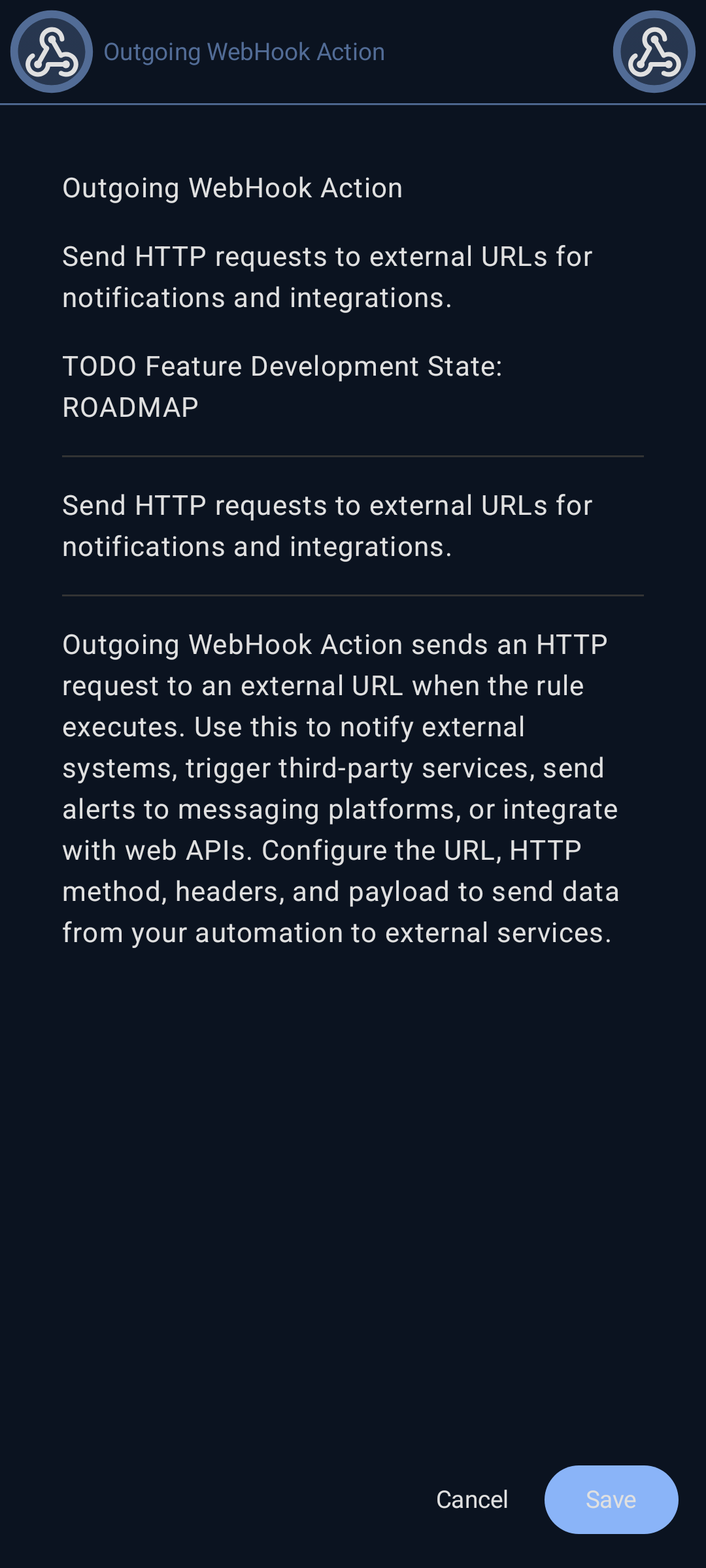
 Execute Script Action
Execute Script Action
Execute Script Action runs custom code when the rule executes. Write Python, Bash, or other scripts to perform complex operations, calculations, or system interactions. Scripts have access to data point values and can perform advanced automation logic beyond built-in actions. Use this for custom integrations, data processing, or specialized control logic.
- Status: roadmap
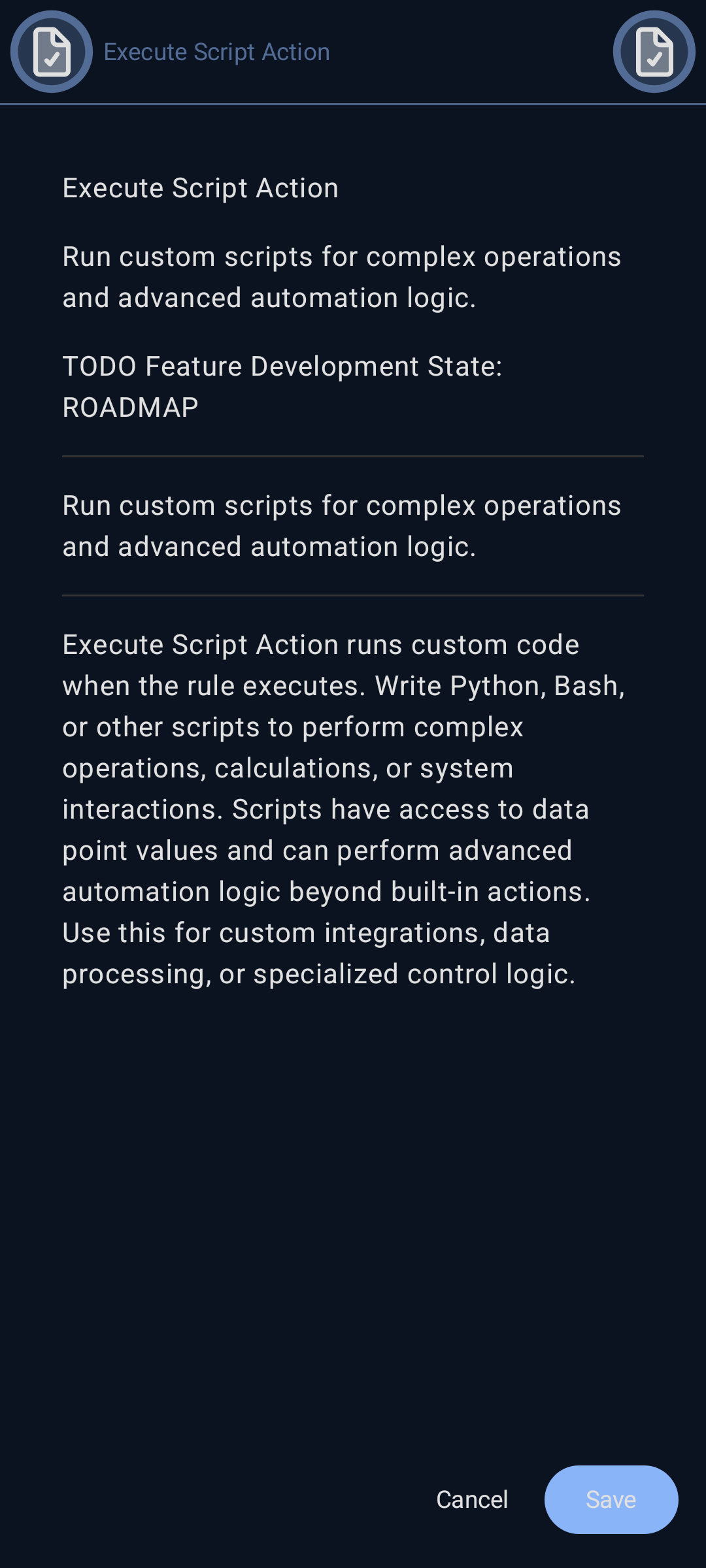
 Unless Constraints
Unless Constraints
Unless Constraints define conditions that prevent a rule from executing. Even if the when conditions are met, the rule will not execute if any unless constraints are active. Use this to create exception cases, safety interlocks, or conditional logic that blocks rule execution during specific states.
- Status: roadmap
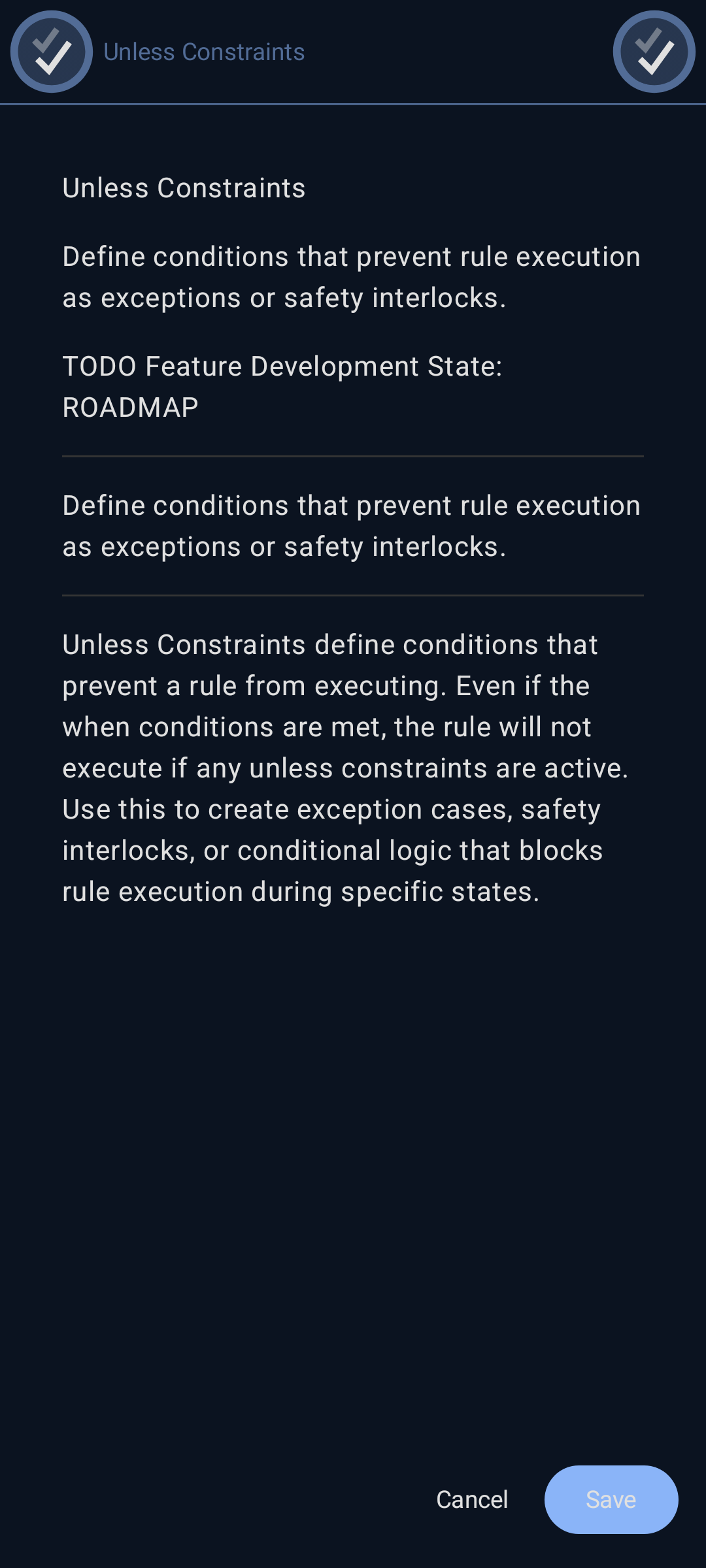
 Until Constraints
Until Constraints
Until Constraints define conditions that stop a rule from executing once they are met. The rule will execute normally until the until conditions become true, at which point the rule is disabled. Use this to create time-limited automations or rules that expire after certain conditions are satisfied.
- Status: roadmap
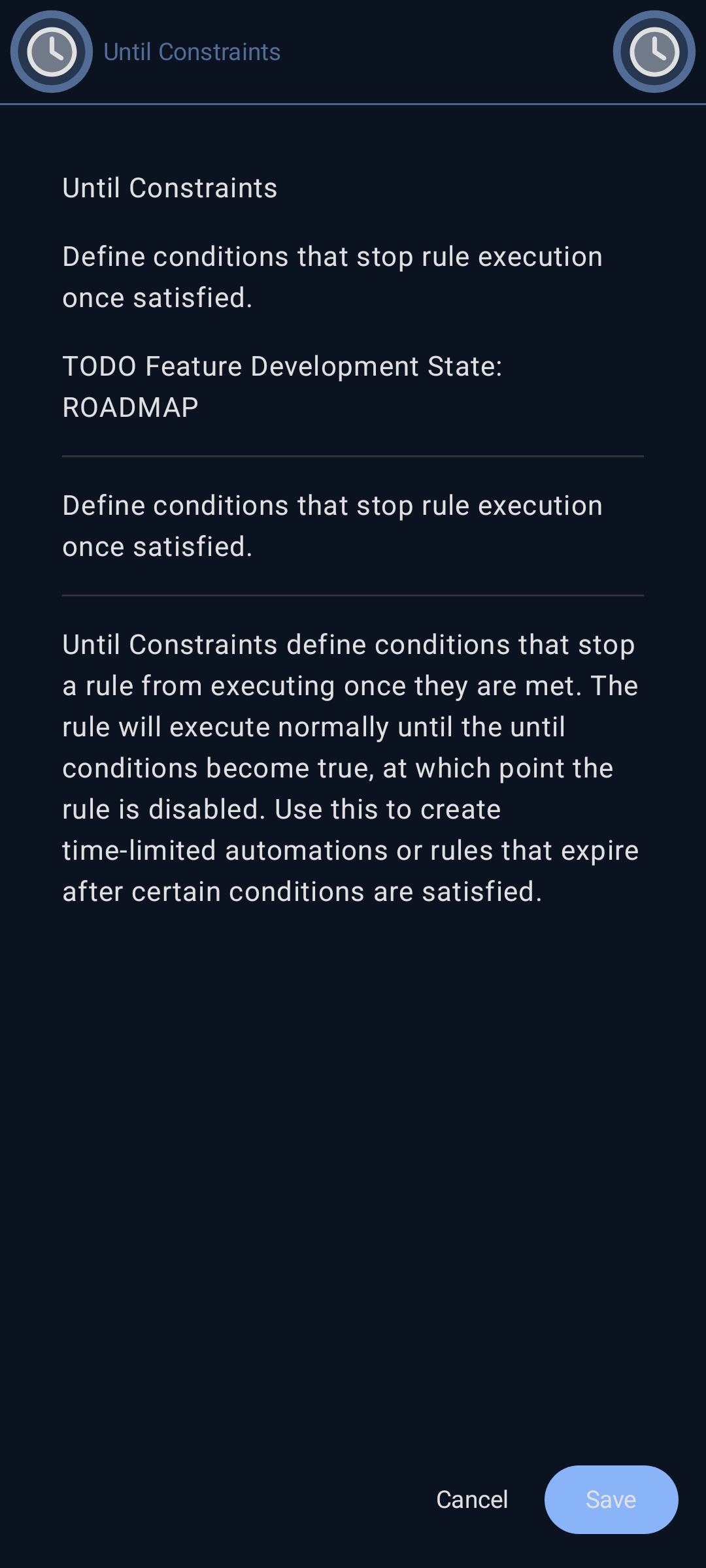
 On Error Handling
On Error Handling
On Error Handling defines actions to execute if the rule’s main actions fail or throw errors. Configure fallback behaviors, error notifications, or recovery procedures to ensure robust automation. This provides graceful degradation and alerting when automation encounters problems.
- Status: roadmap

 Cleanup Actions
Cleanup Actions
Cleanup Actions define operations to execute after the rule completes, regardless of success or failure. Use this for resource cleanup, resetting state, closing connections, or finalizing operations. Cleanup actions always run to ensure consistent system state after rule execution.
- Status: roadmap
